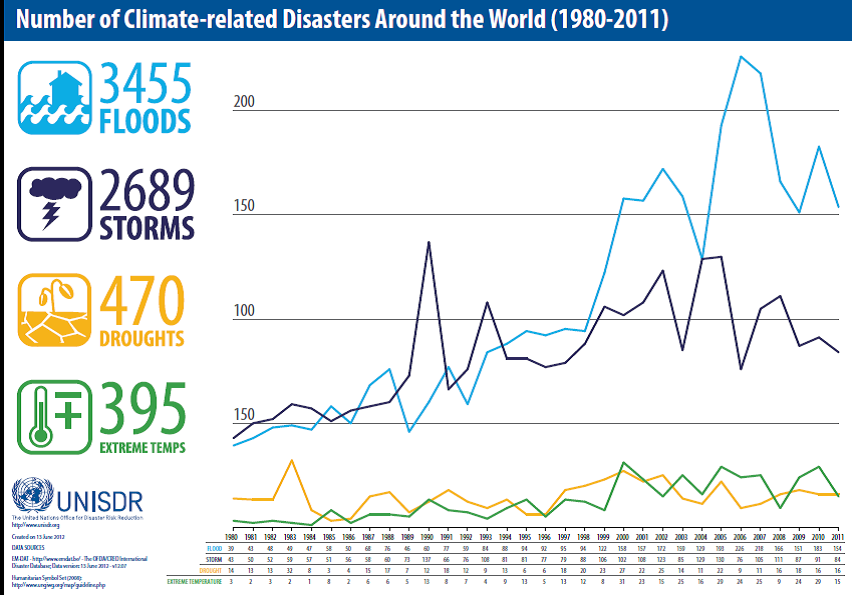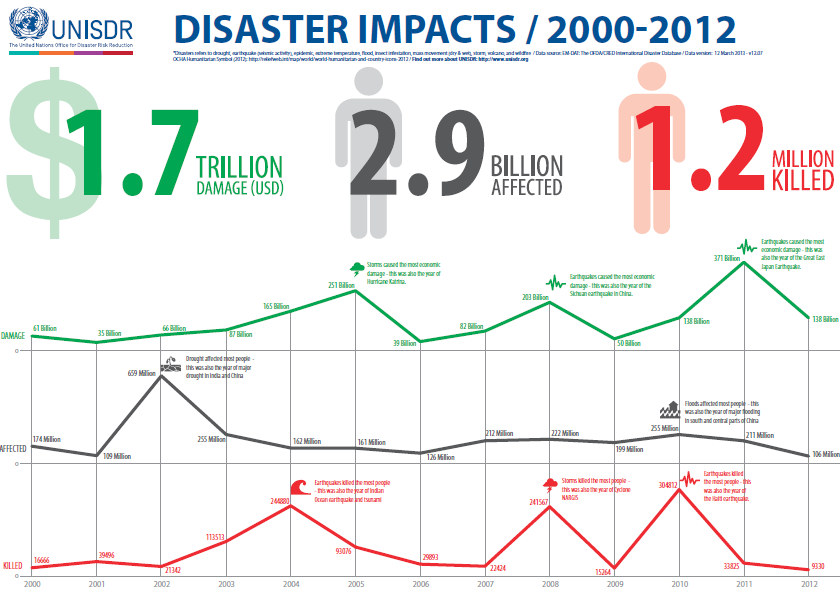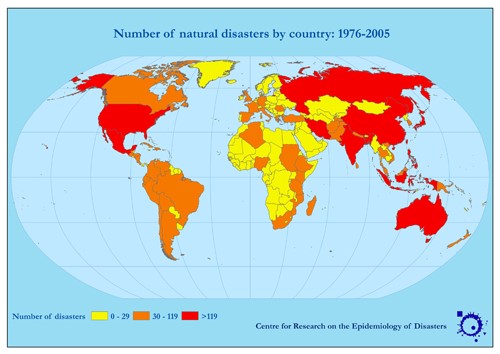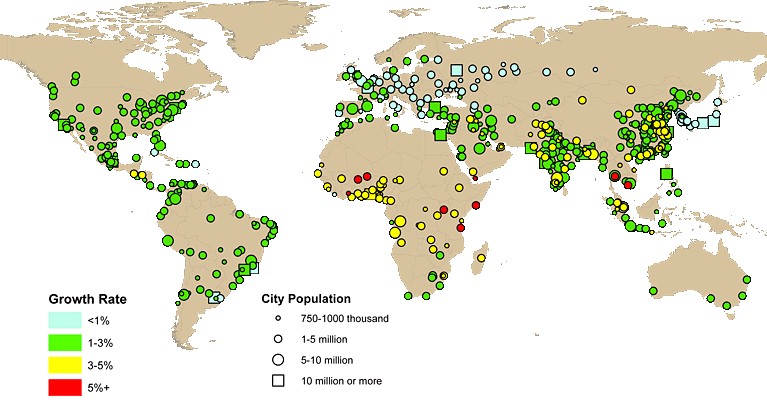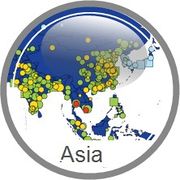Knowledge fuels change
For over a decade, Energypedia has shared free, reliable energy expertise with the world.
We’re now facing a serious funding gap.
Help keep this platform alive — your donation, big or small, truly matters!
Thank you for your support
Difference between revisions of "Resilience in the Transport Sector"
***** (***** | *****) |
***** (***** | *****) |
||
| Line 115: | Line 115: | ||
| | | | ||
|} | |} | ||
| + | |||
== Implementation Projects<br/> == | == Implementation Projects<br/> == | ||
| − | {| | + | Under this thematic area, implementation work that has been undertaken in field of Transport Resilience is mentioned. |
| + | |||
| + | {| | ||
|- | |- | ||
| − | ! | + | ! style="text-align: center; background: none repeat scroll 0% 0% rgb(240, 240, 240); width: 136px" scope="col" | '''Title''' |
| − | ! | + | ! style="text-align: center; background: none repeat scroll 0% 0% rgb(240, 240, 240); width: 187px" scope="col" | '''Thematic area / keywords''' |
| − | ! | + | ! style="text-align: center; background: none repeat scroll 0% 0% rgb(240, 240, 240); width: 287px" scope="col" | '''Description''' |
| − | ! | + | ! style="text-align: center; background: none repeat scroll 0% 0% rgb(240, 240, 240); width: 79px" scope="col" | '''Links''' |
|- | |- | ||
| style="text-align: left; width: 136px" | | | style="text-align: left; width: 136px" | | ||
Revision as of 08:57, 29 May 2014
Overview/Impact and importance of Resilience in transport sector
Globally the number of natural disasters, i.e. climate related disasters such as flooding, drought, storms/cyclone and extreme temperature changes are increasing worldwide, particularly in the last few years.
Within the period from 2000-2012, climate related disasters* had a serious impact on the world. In total they have caused [2]
- US$ 1.7 trillion of damage
- 2.9 billion people have been directly affected
- 1.2 million people have been killed
- Within this section we will be considering a wide range of natural disasters but will be primarily focusing on natural disasters associated with climate change.
It has been forecasted that if the trend continuous damages could reach up to 20% of the entire global GDP at the end of the century.[4]
Over the period of the last 10 years, of the 10 deadliest disasters that have occurred worldwide, 7 have occurred within counties of Asia. In the graph below, the countries in red experienced more than 119 natural disasters. A closer look reveals that most of these countries lie in the Asian region.[5]
Urbanization exacerbates the damages that natural disasters causes, thus necessitating the need for communities to become resilient[6].
Resilience is defined as the ability of an individual, household, community, a country or a region to withstand, adapt and quickly recover from stresses and shocks caused by natural disasters.[7]
An important strategy to increase overall resilience is to improve the resilience of the transport system. Under normal conditions, it provides capable mobility options for moving passengers as well as goods. However under emergency or evacuation situations the significance of a system’s utility and value as a support role become more apparent. The same holds true for the system’s ability to support post-disaster recovery and supply efforts[8].Transport systems allow movements away from adverse conditions (i.e. removing things or people away from the destruction or damage being caused) or towards areas of greater need (i.e. provide resources to help with recovery work). In addition, the longer a transport system remains disrupted during and after a shock, the more severe economic losses will be for community/region. Climate changes taking place, in form of more natural disasters occurring, have the ability of severely disrupting transport services and/or damaging the infrastructure thus limiting mobility or putting it to a standstill in time of dire need[9].
Thus an efficient transportation system can play an important role towards making the community resilient[10]. The limited funds that are available for supporting transport infrastructure need to be used in an efficient and just manner in order to make the communities’ mobility resilient. This can be done by designing, developing and maintaining transport infrastructure that is able to meet the existing and future climate change conditions.
The following tables provide information on resources and projects on resilience in a transport sector, with a focus on adaptation to climate change. Please also have a look at the article Adapting Urban Transport to Climate Change (https://energypedia.info/wiki/Adapting_Urban_Transport_to_Climate_Change) which provides more in-depth information.
Projects and Resources in field of Resilience and Transport
Publications and Resources
Research Projects
Under this thematic area, all research work that has been undertaken in field of Transport Resilience is mentioned. The table below provides highlight of the research work undertaken
| Title | Thematic area / keywords | Description | Links |
|---|---|---|---|
| Futurenet - Future resilient transport networks | Infrastructure, Climate Change | The overall aim of FUTURENET is to help answer the questions: what will be the nature of the UK transport system in 2050, both in terms of its physical characteristics and its usage, and what will be the shape of the transport network in 2050 that will be most resilient to climate change? This will be achieved through a series of targeted objectives, including; the development of possible UK transport scenarios,
•the development of conceptual models of weather / climate induced failure mechanisms of transport systems, together with meteorological and climatic trigger levels where these can be identified • the development of a modelling methodology that will integrate the work of the first two objectives, and allow the effect of climate change on the resilience of transport networks to be systematically studied • the development of generic methods that can be applied to other transport corridors and the dissemination of the results amongst stakeholders, policy makers and practitioners |
Read more |
| Real-time planning for resillient transport futures | Technical, Planning | Many topic for research with the umbrella | More Information |
| Road Owners Getting to Grips with Climate Change | Technical, transport, climate change | The “Road Owners Getting to Grips with Climate Change” research programme aimed at providing road authorities all across Europe with the knowledge and tools necessary to "get to grips" with climate change and its effects on all elements of road management by adapting design rules, updating and improving data collection, and developing risk management methods. | Read more |
| State of the art of likely effect of climate change on current roads, ENR SRO3 report, October 2009 | Technical, road maintenance, climate change | The future climate change and its influence on the performance of the road network is an issue that is concerning more and more countries. This report shows how the predicted changes will affect highways performance, most likely in a negative way. If temperatures rise and precipitation increases, it looks as though present design theory and construction techniques must be amended to accommodate for these differences of climates. | Read more |
| Alternative materials and methods to enhance resistance to climate change, ENR SRO3 report, January 2010 | Technical, Road maintenance, Climate change | This report shows a summary of the alternative ways and materials that can be used in order to reduce the negative effects of climate on the road pavement?, with particular attention to the sub-base layer. The report mainly focuses on presenting different types of alternative base and sub-base materials that can potentially reduce the influence of water on the strength. | Read More |
| Study of water effects on asphalt and porous asphalt, ENR SRO3 report, June 2010 | Technical, Road maintenance, Climate change | This literature review will focus on the effects of moisture on asphalt pavements. The report provides an introduction to what might happen to asphalt pavements in the event of climate change. Specifically, what negative effects might events of this nature have, and what tools does engineers have to mitigate such issues. The conclusions will be presented based on the available knowledge using existing asphalt technology and climate change predictions. These conclusions will focus on the impacts of moisture on asphalt, and specifically how increased rainfall may promote failures of asphalt pavements. | Read more |
| Climate Change Projections for Variables Affecting Road Networks in Europe, ENR SRO3 report, April 2010 | Technical, Road maintenance, Climate change | In this report climate change projections are presented for those climate variables that were considered most likely to affect the long-term performance of road networks in Europe. These projections are based on climate simulations by a regional climate model and using two plausible future emission scenarios. The results are presented as maps. | Read More |
| Building a More Disaster and Climate Resilient Transport Sector in Papua New Guinea | Transport, Risk, Climate change | The object of the project is to support the recipient
• to develop suitable tools for evaluation and communication of the risks related to natural hazards, • to sensitise decision makers as to the potential associated losses, • to understand the causes and consequences of disasters to the transport sector and • to develop evidence based strategies for risk management in the transport sector |
More information |
| Transportation Network Resiliency: A Study of Self-Annealing | Disaster, Transport Resilience | Transportation networks, as important lifelines linking communities and goods, are indispensable for the smooth functioning of society. These networks are, however, fragile and vulnerable to natural and man-made disasters, which can disrupt their vital functionality. The role of the transportation sector becomes more crucial during disasters due to its role in pre-disaster evacuation as well as post-disaster recovery. Authorities need to understand the degree of resilience within the transportation system under their jurisdiction and plan for improvements. In this research, attempts have been made to deal with resilience in quantitative ways to provide defensible data to decision makers to support investment strategies. The objective of this research is to create a conceptual framework to quantify resilience and discuss quantitatively the properties determining resilience of transportation networks. The concepts presented are applied to a test network to illustrate the mathematical procedures. Such methods can help decision makers analyze relative improvements in resiliency as a consequence of proposed project alternatives and help to perform benefit-cost analysis for such projects. | Read More |
Implementation Projects
Under this thematic area, implementation work that has been undertaken in field of Transport Resilience is mentioned.
| Title | Thematic area / keywords | Description | Links |
|---|---|---|---|
|
Climate Change Vulnerability Assessment Pilots (Impact region:USA) |
Climate Change, Risk on Transport | This project funded by DOTs and MPOs aims to conduct a pilot Conceptual Model to use in conducting vulnerability and risk assessments of infrastructure to the projected impacts of global climate change (GCC). The purpose of the pilots was twofolds; 1) to assist State DOTs and MPOs to quickly advance existing adaptation assessment activities and 2) to assist FHWA in "test-driving" the model.Based on the feedback received through the pilots, FHWA will revise and finalize the model for national application. | Read More |
|
Bangladesh: Coastal Climate Resilient Infrastructure Project (CCRIP) Impact Region: Bangladesh |
Climate Change, Infrastructure, Road maintenance | The goal of CCRIP is to achieve improved livelihoods, in the form of higher incomes and food security, for poor households in the selected Upazilas. The project development objective is to achieve enhanced climate resilience of coastal road and market infrastructure and people in the project area. | Read More |
|
Transport Sector Development Project Impact Region: Somon Islands |
Road maintenance, Transport Infrastructure | The project is aimed towards improving access to socioeconomic opportunities by rehabilitating and maintaining land, sea, and air transport infrastructure. Solomon Islands has been offered significant parallel grant co-financing from the governments of Australia and New Zealand but has insufficient capacity to plan and implement the necessary civil works. The project will therefore strengthen transport sector institutions by establishing a central project implementation unit (CPIU) to reform the government's institutional structure, implement civil works, and conduct technical and managerial capacity development | Read more |
|
Resilient Transportation Systems in a Post-Disaster Environment: A Case Study of Opportunities Realized and Missed in the Greater New Orleans Region, 2010 Impact Region: USA |
Climate Change, Transport | This project uses the New Orleans Region as a case study to assess transportation resiliency both pre and post- Katrina, the devastating storm of 2005. Using the Katrina experience as a point of reference, the project aims to understand how the New Orleans region progressed in terms of transportation resiliency. Pre–event planning and post-event recovery highlighted the importance of a transportation system’s ability to withstand the stresses associated with a catastrophe of this magnitude. In order to review the system as a whole, the study focused on pre-storm transportation and policy composition, the failures that resulted from the event, and what policy changes have strengthened the post-storm transportation system. “Lessons learned” and key policies in both the public and private sector post-disaster are highlighted. Inputs from planning and government officials were also used to identify policy and procedural changes that affected both evacuation and disaster response. | Read More |
|
Climate Resilience in Cities in the Greater Mekong Sub-region Impact Regions: Vietnam, Cambodia, Lao PDR |
Climate change adaptation planning, Climate change impact and vulnerability assessments, Climate change modeling, Community engagement, GIS and spatial analysis, Mainstreaming environment and climate change | This ADB project is designed to assist Greater Mekong Subregion (GMS) cities to increase their understanding of climate change impacts and adaptation, to promote ‘climate resilient’ development. ICEM will conduct a climate change threat and vulnerability assessment in the towns of Battambang (Cambodia), Dong Ha (Vietnam), and Kaysone Phomvihane (Lao PDR), focussing on critical infrastructure. Through knowledge-sharing events and policy dialogues on climate change risks and adaptation, participating towns will learn about climate change impacts on critical infrastructure and the tools and processes necessary to adapt to climate change, tailored to their unique circumstances. The information and lessons learnt will be synthesized into a handbook, outlining good adaptation practices from the region and internationally. | Read More |
Concluding remarks / Summary
As illustrated through the work undertaken under various streams mentioned above, it is clear that at present our transportation systems are fragile. On the other hand, the transport sector plays a vital role in achieving economic growth of a country. Thus to ensure unhindered economic progress, it is increasingly becoming urgent to safeguard the transportation systems against the after math of natural disasters whose frequency of occurring is increasing at an alarming rate. To design such a resilient transportation system will require a robust regulatory reforms from the governments. Hence transportation sector should be considered as a key mitigating enabler towards making communities more resilient towards the climate change.
Further information
- ↑ http://infographics.idlelist.com/number-of-climate-related-disasters-around-the-world-1980-2011/
- ↑ Source: UNISDR
- ↑ http://www.indexmundi.com/blog/index.php/2013/06/03/economic-and-human-impact-of-natural-disasters/
- ↑ http://www.google.co.in/url?sa=t&rct=j&q=&esrc=s&source=web&cd=4&cad=rja&uact=8&ved=0CEEQFjAD&url=http%3A%2F%2Fmudancasclimaticas.cptec.inpe.br%2F~rmclima%2Fpdfs%2Fdestaques%2Fsternreview_report_complete.pdf&ei=2gZ7U5OJAsO9uATvk4KICw&usg=AFQjCNFFmJMSu0en0pplIr5kIHqbzrRKsA&sig2=LCadmR9f5OtEtEOmF4XbWg&bvm=bv.67229260,d.c2E
- ↑ Source: EM-DAT: The OFDA/CRED International Disaster Database – www.emdat.be, Université Catholique de Louvain, Brussels (Belgium)
- ↑ Source : http://esa.un.org/unup/Maps/maps_2011_2025.htm
- ↑ Source: European Commission
- ↑ Source: Amdal. James, Swigart. Stan , 2010; Resilient Transportation Systems in a Post Disaster Environment: A Case Study of opportunities realized and missed in the Greater New Orleans region
- ↑ Adapted text from http://www.transport.vic.gov.au/research/sustainability/transport-resilience-and-climatic-extremes
- ↑ Adapted text from Evaluating Transportation Resilience: Evaluating The Transportation System’s Ability To Accommodate Diverse, Variable and Unexpected Demands With Minimal Risk(http://www.vtpi.org/tdm/tdm88.htm)

